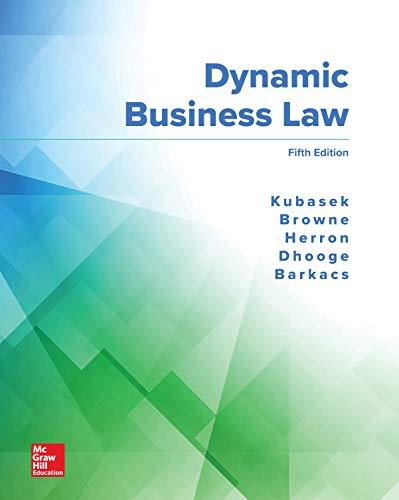Since 1906, Teck Cominco Metals, Ltd., located ten miles north of the US-Canada border emitted hazardous substances
Question:
Since 1906, Teck Cominco Metals, Ltd., located ten miles north of the US-Canada border emitted hazardous substances such as lead, arsenic, cadmium, and mercury compounds into the atmosphere from the stacks at the Teck smelter. Teck’s metal smelting operation has been the target of legal disputes for nearly as long.
This case began with plaintiffs the Confederated Tribes of the Colville Reservation and the State of Washington lodging a complaint under CERCLA concerning the dumping of slag into the Columbia River. However, after the Phase I trial was completed, the district court allowed the plaintiffs to amend their complaints to add claims for damages from Teck’s atmospheric emissions. Teck moved to dismiss the new claims, arguing that CERCLA imposed no liability when hazardous waste traveled through the air but the district court rejected the argument.
One month after the district court’s decision, the Ninth Circuit issued a ruling in a separate case which held that emitting diesel particulate matter into the air before it touched land and water did not constitute “disposal” of waste under the RCRA. Because CERCLA cross-references the RCRA’s definition of “disposal,” Teck moved for reconsideration and the Ninth Circuit granted permission to appeal.
At the heart of this case is what “disposal” means in CERCLA. As mentioned earlier, CERCLA cross references the RCRA’s definition of “disposal.” According to the RCRA, “disposal” is “the discharge, deposit, injection, dumping, spilling, leaking, or placing of any solid waste or hazardous waste into or on any land or water so that such solid waste or hazardous waste or any constituent thereof may enter the environment or be emitted into the air or discharged into any waters, including ground waters.”
For Teck to be held liable by a private party under CERCLA, the plaintiffs must show, inter alia, a “release” or “threatened release” of any “hazardous substance” from the facility, where the word “disposal” is included in the term “release.”
Based on the definitions, do you think the plaintiff can show Teck “disposed” hazardous substances when it emitted dangerous metal particulate directly into the air? How did the Ninth Circuit decide? Summarize its multifaceted argument. Do you agree with the Ninth Circuit’s argument?
Step by Step Answer:

Dynamic Business Law
ISBN: 9781260247893
5th Edition
Authors: Nancy Kubasek, M. Neil Browne, Daniel Herron, Lucien Dhooge, Linda Barkacs





